Spectacular Kimbe Bay by Don Silcock
Spectacular Kimbe Bay
By Don Silcock.
In a country renowned for the amazing diversity of its scuba diving there are a few stand-out locations where should you only visit PNG once in your life, you will just have to choose from…
Very much on that short-list would have to be Kimbe Bay, the jewel in the crown of New Britain - the largest of the many islands that make up the country that is Papua New Guinea.
Located roughly one third along the north coast of New Britain, Kimbe is a large sheltered bay that is bounded by the Willaumez Peninsula in the west and some 140km to the east by Cape Tokoro.
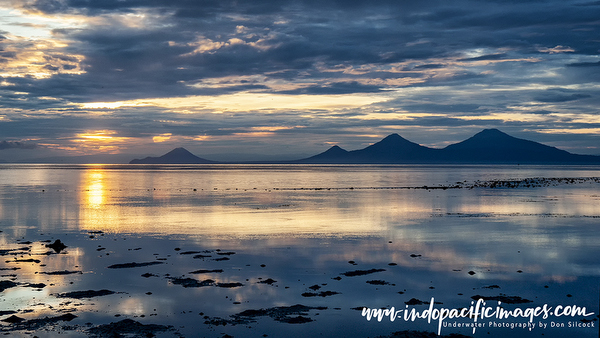
New Britain
Roughly 500 km long and some 150 km at its widest, the crescent-shaped island of New Britain is located just south of the equator.
It is part of the Bismarck Archipelago, which forms the southern rim of the infamous “Ring of Fire” - the volatile, unpredictable, horseshoe-shaped, seismic strip of oceanic trenches and volcanic arcs that wreak havoc periodically around the Pacific Ocean basin.
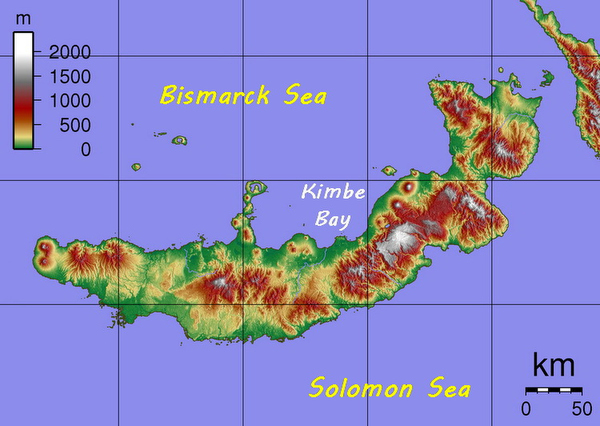
Along the spine of New Britain are huge mountain ranges created by those volcanic uplifts, which are so high they effectively isolate the north coast from the South and create their own weather patterns.
So that while the north coast follows the normal monsoonal seasons, the south is completely opposite. The mountains also create a partial rain shadow over the north, making the south coast the second wettest place on earth, with annual rainfalls of between 6-8 meters!
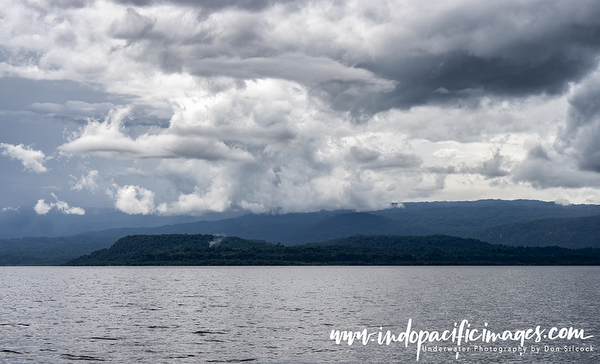
Kimbe Bay
As you approach Kimbe Bay’s Hoskins Airport you will pass over the Willaumez Peninsular and get a quite spectacular first glimpse of the visually defining feature of this part of New Britain – volcanoes…
On the tip of the peninsular are two large freshwater lakes occupying the huge caldera left by the massive eruption of the Dakataua volcano almost 1200 years ago. Then dotted along the long and narrow isthmus are three smaller volcanoes.
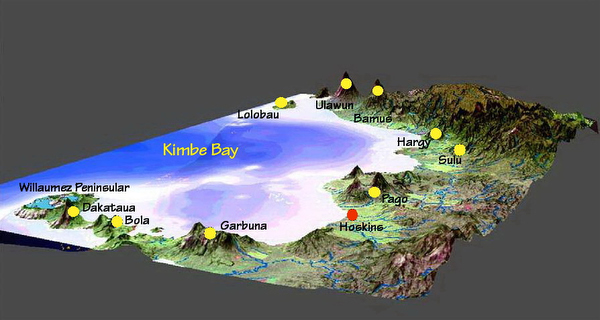
The final approach into Hoskins is overshadowed by the large Mount Pago volcano, together with its two smaller siblings and one can only imagine the incredible forces released upon this remote area of New Britain.
But time is a great healer and the results are a sight to behold. All around are the rich soils created by those volcanic eruptions and everywhere you look is life. As somebody once said about this part of Papua New Guinea – just put a dead stick in the ground and wait for life to sprout anew…
Biodiversity
Kimbe Bay is renowned for its extremely rich marine environment and surveys by The Nature Conservancy, have helped to establish a bewildering array of statistics for the area.
Not least of which are around 860 species of reef fish and 400 species of coral, plus at least 10 species of whales and dolphins that are known to visit the area.

The life-source for that amazing biodiversity are the rich currents of the Bismarck Sea to the north, which are themselves the result of the incredibly complex regional and equatorial water flows.
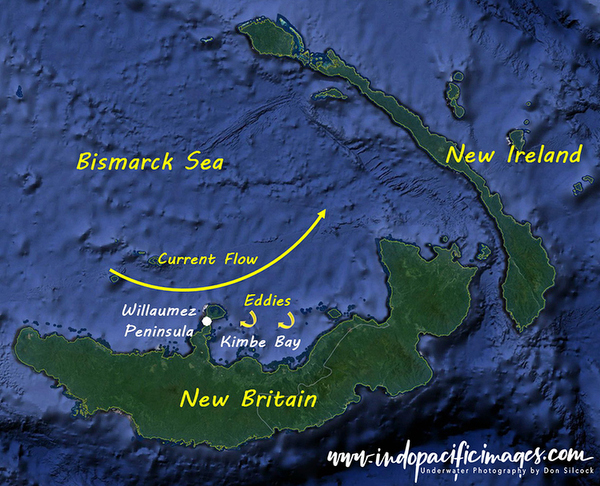
But the bottom line, as they say in the real estate game is location, location, location and Kimbe Bay’s sheltered position on the north coast of New Britain, together with its incredible underwater topography and those rich currents have created an almost perfect and pristine marine environment!
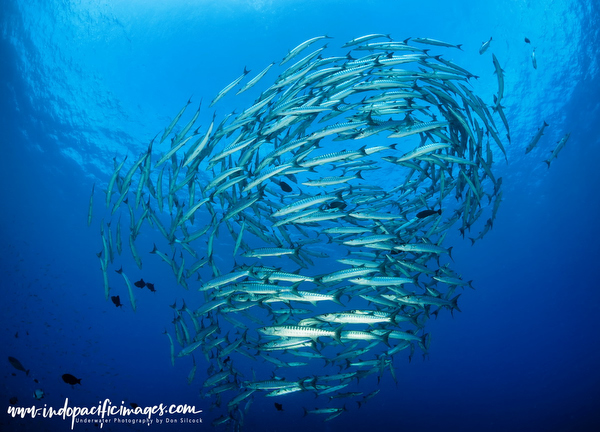
Beneath Kimbe Bay
When those incredible tectonic forces wreaked their havoc to create Kimbe Bay all those centuries ago, the result was basically a 140km wide underwater amphitheater with shelves that start at a depth of some 200m and run parallel around the shore.
About 5km offshore the bottom drops down to around 500m and then as it approaches the Bismarck Sea the seafloor descends rapidly to in excess of 2000m.

Along those inner shelves are numerous pristine reefs that rise up into the shallows, while across the deep seascape are dramatic seamounts and pinnacles that reach towards the surface and provide isolated and self-contained ecosystems.
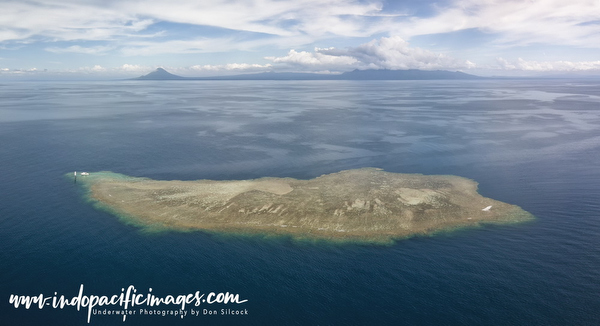
Diving Kimbe Bay
Kimbe Bay’s mix of beautiful scenic reefs and dynamic seamounts offer some excellent diving, plus the bay has one of the best-preserved WWII aircraft wrecks in Papua New Guinea.
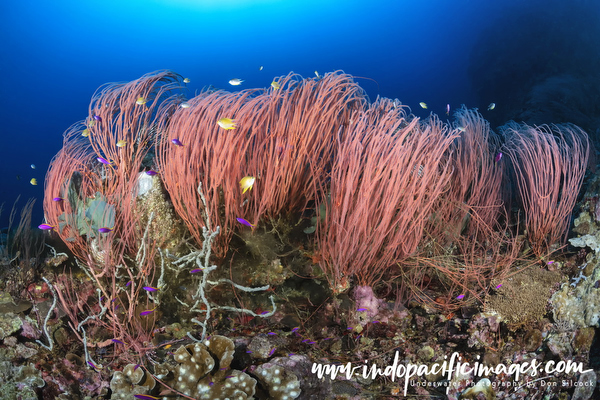
The reefs are simply a joy to dive and are a wonderful combination of hard corals, garnished with patches of beautiful soft corals, photogenic sea fans, and bright red sea-whips.

While the seamounts pulse with life from the pelagic, open-water fish that patrol above and around them. And then there is always the chance of a random encounter with migrating mammals like whales or orcas that have entered the bay.
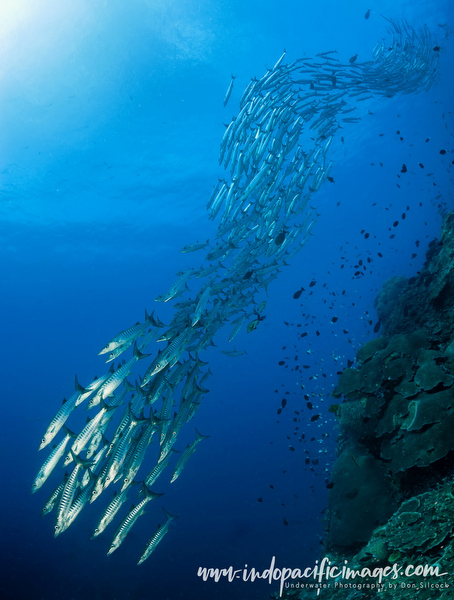
There are around 25 dive sites in Kimbe Bay that are dived regularly and so it is simply not possible to cover them all in an article like this… But having dived about 90% of them now, I can honestly say that I am rarely if ever, disappointed with a dive in Kimbe.
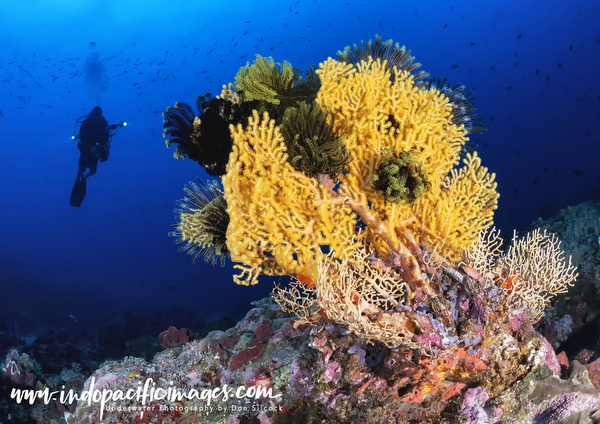
Each site had its own characteristic features and special places - be it areas of incredibly rich hard and soft corals, beautiful patches of vibrant red sea whips, caves and swim-throughs or known habitats for those special creatures we all like to see and photograph!
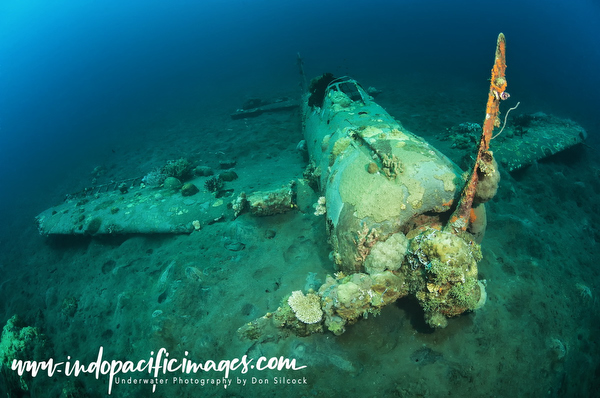
Walindi
Diving in Kimbe Bay was pioneered by Max and Cecilie Benjamin, agronomists who had arrived in New Britain in the late 1960s on a short-term assignment on their way to a new life in Canada.

But all that changed when they bought the 800-acre Walindi palm oil plantation in 1969, with the intention of modernizing and improving its operation. But, by the early 1970s, they had started to scuba dive at the weekends and were literally the first people to discover the incredible biodiversity of Kimbe Bay.
In 1983 Max and Cecilie started Walindi Plantation Dive Resort and have grown it into a significant business. Complete with three day-boats for diving the bay and two liveaboards, the MV Febrina and MV Oceania, capable of exploring the most remote locations of New Britain.
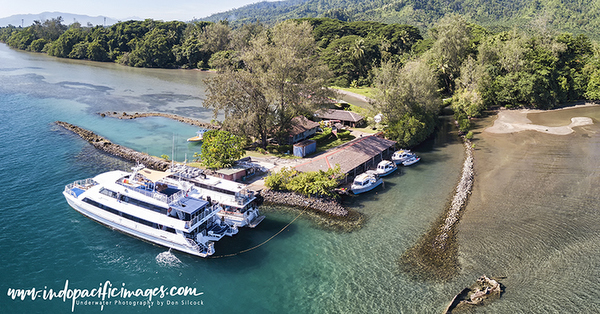
Sadly, Max Benjamin passed away recently, but his legacy lives on with Walindi now managed by Max & Cecilie’s son Cheyne.

Getting to Kimbe Bay
Port Moresby is currently the only international airport in Papua New Guinea but is well served by Air Nuigini, Qantas and Virgin from Brisbane from Australia on a daily basis, plus it is possible to connect to Port Moresby from Singapore, Hong Kong, and Manilla.
Virtually all flights from Australia arrive into Port Moresby (POM) around lunchtime, which gives you plenty of time to clear immigration and customs. Then it’s the short walk down to the domestic terminal for the flight to Hoskins (HKN) in Kimbe Bay.
Air Nuigini operates direct flights to Hoskins, while PNG Air flies there via Lae and Rabaul – check their sites for specifics…
Which all means that, with a bit of careful planning, you should be able to leave home in the morning and have a cold beer at Walindi that evening. Similarly, you should be able to leave Hoskins in the morning and be home the same day.
Don’s Handy Hints…
You will need a visa to enter PNG and, in the past, you had to either apply in advance, which means sending your passport… or get one on arrival. The problem with the visa on arrival is there is often a big queue and it can eat into your transit time!
The good news is that the PNG Government has now introduced visas and you can now get a 30-day visitor’s visa online, which makes things much easier all around.
If you fly Air Nuigini into Port Moresby and use them for the flight to Hoskins, then you are eligible for the 35kg “divers allowance” which makes things much easier and cheaper on the baggage front!
The Complete Guide to Kimbe Bay
I have been fortunate to dive Kimbe Bay numerous times since my first visit there some 16 years ago and have put together a detailed guide on the bay, its biodiversity, the reefs, the seamounts and the efforts put in to conserve it all.
You can use this link to access the Complete Guide to Diving Kimbe Bay.
Don Silcock
In more normal times Don is based on the Indonesian island of Bali and his website has extensive location guides, articles, and images on some of the best diving locations in the Indo-Pacific region and “big animal” encounters globally.